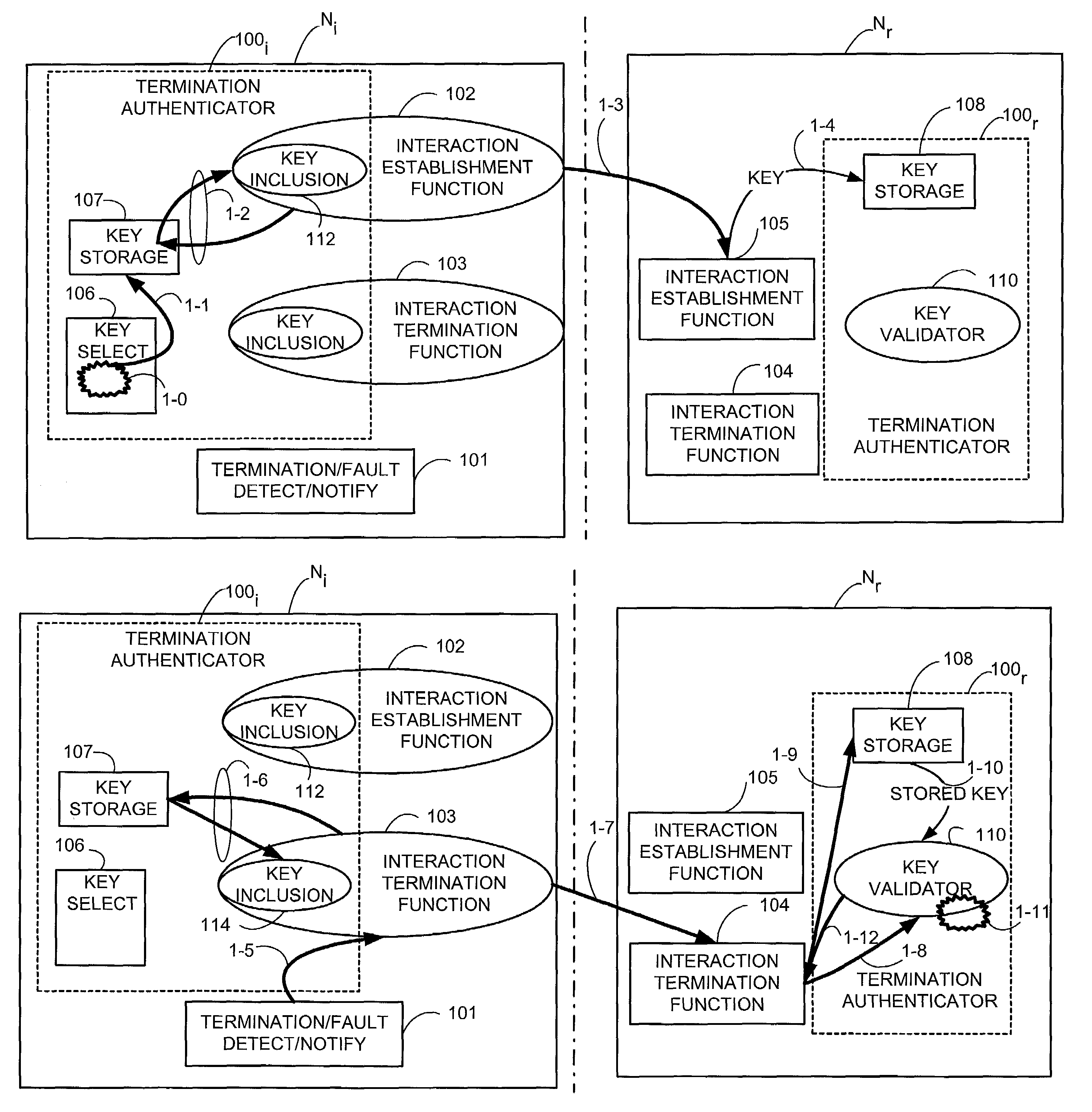Authentication of termination messages in telecommunications system
a technology of telecommunications system and authentication, applied in the field of protection and safety of telecommunication systems, can solve the problems of serious and affecting the context of the user equipment unit, and affecting the control node in whole or in part, etc., and achieve the effect of ensuring the integrity of the termination message and ensuring the authenticity of the termination messag
- Summary
- Abstract
- Description
- Claims
- Application Information
AI Technical Summary
Benefits of technology
Problems solved by technology
Method used
Image
Examples
Embodiment Construction
[0069]In the following description, for purposes of explanation and not limitation, specific details are set forth such as particular architectures, interfaces, techniques, etc. in order to provide a thorough understanding of the present invention. However, it will be apparent to those skilled in the art that the present invention may be practiced in other embodiments that depart from these specific details. In other instances, detailed descriptions of well-known devices, circuits, and methods are omitted so as not to obscure the description of the present invention with unnecessary detail. Moreover, individual function blocks are shown in some of the figures. Those skilled in the art will appreciate that the functions may be implemented in various ways.
[0070]FIG. 1A and FIG. 1B show two nodes Ni and Nr of a communications network. The two nodes Ni and Nr communicate over an air interface depicted by the broken line in FIG. 1A and FIG. 1B. There may be intermediate nodes (such as a ...
PUM
 Login to View More
Login to View More Abstract
Description
Claims
Application Information
 Login to View More
Login to View More - R&D
- Intellectual Property
- Life Sciences
- Materials
- Tech Scout
- Unparalleled Data Quality
- Higher Quality Content
- 60% Fewer Hallucinations
Browse by: Latest US Patents, China's latest patents, Technical Efficacy Thesaurus, Application Domain, Technology Topic, Popular Technical Reports.
© 2025 PatSnap. All rights reserved.Legal|Privacy policy|Modern Slavery Act Transparency Statement|Sitemap|About US| Contact US: help@patsnap.com



